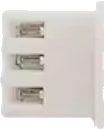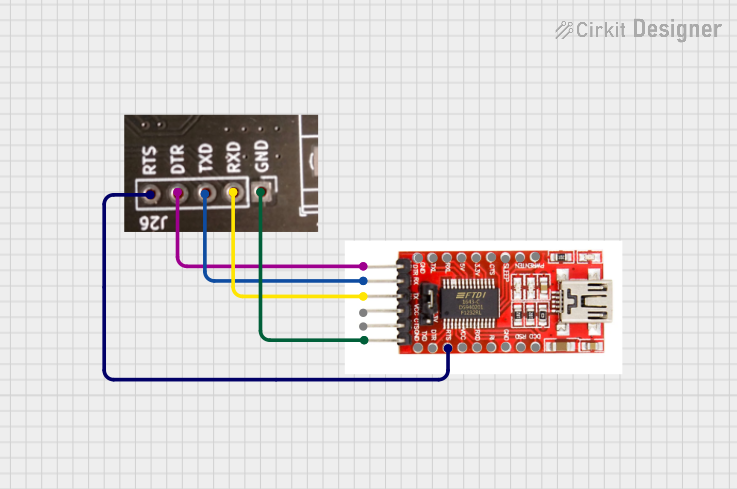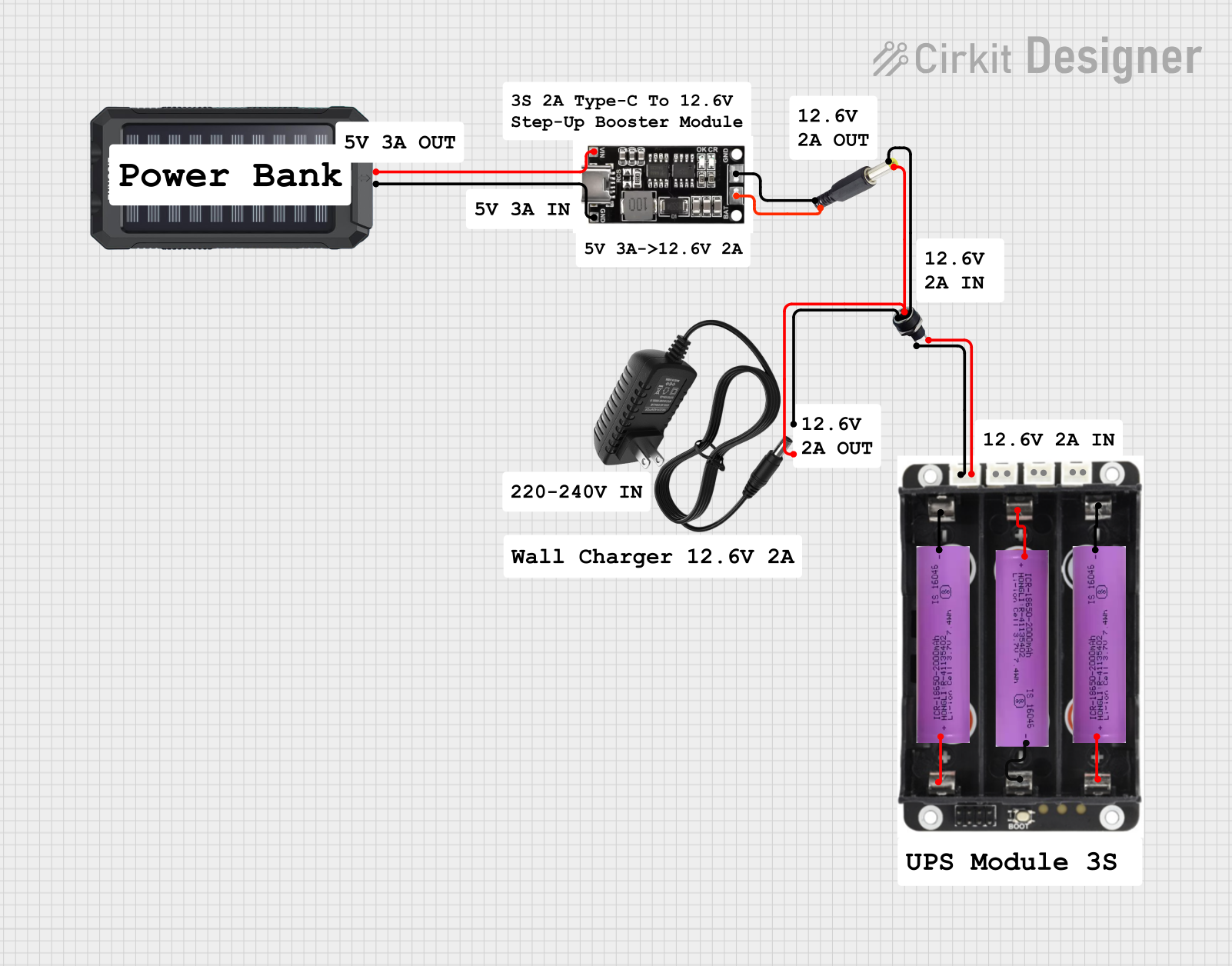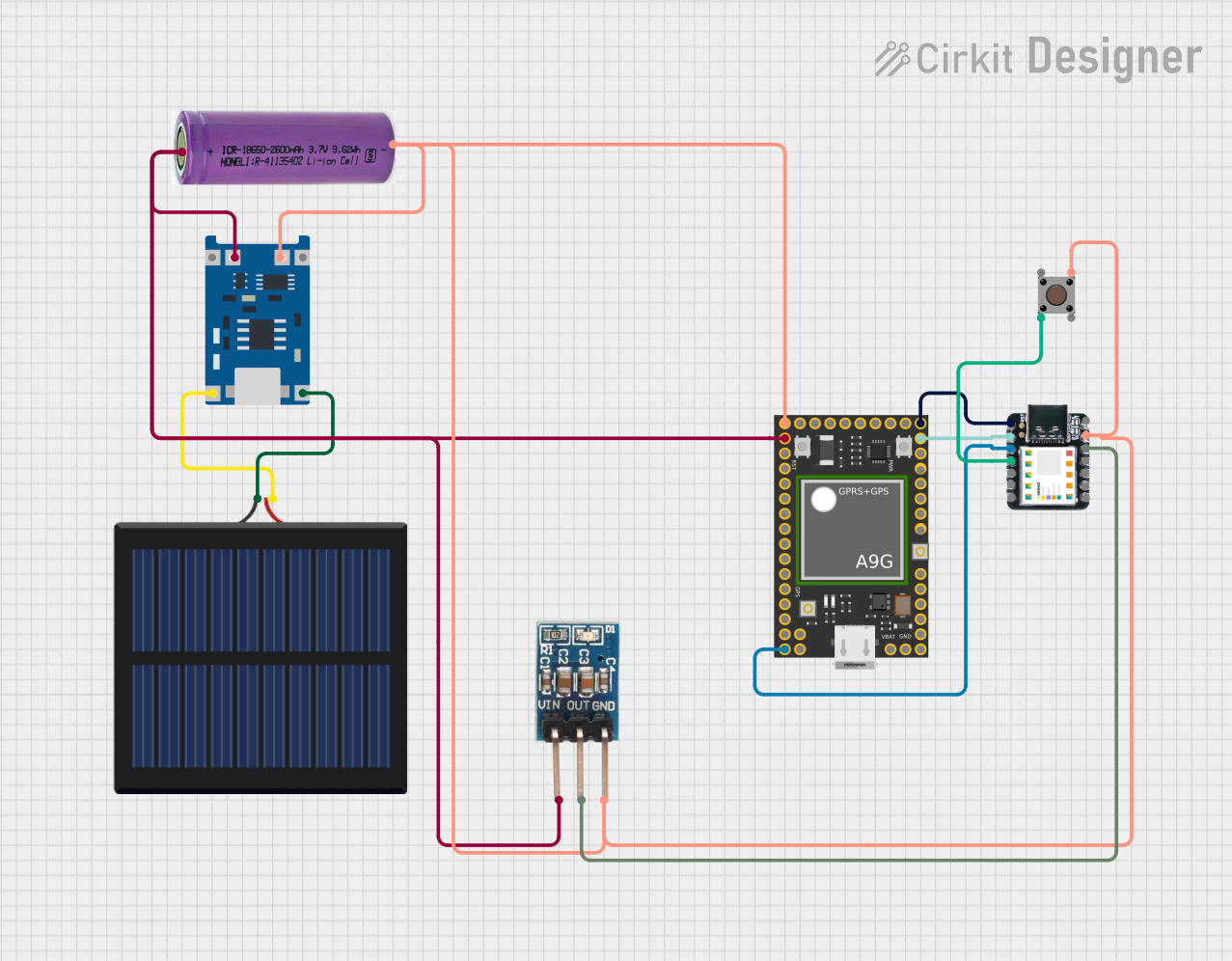
How to Use JST SH1 x3 Male: Examples, Pinouts, and Specs

 Design with JST SH1 x3 Male in Cirkit Designer
Design with JST SH1 x3 Male in Cirkit DesignerIntroduction
The JST SH1 x3 Male is a compact, 1.0mm pitch connector designed for secure and reliable wire-to-board or wire-to-wire connections in electronic circuits. It features three male pins, making it ideal for applications requiring a small form factor and robust connectivity. This connector is widely used in consumer electronics, robotics, drones, and other compact devices where space-saving and dependable connections are critical.
Explore Projects Built with JST SH1 x3 Male

 Open Project in Cirkit Designer
Open Project in Cirkit Designer
 Open Project in Cirkit Designer
Open Project in Cirkit Designer
 Open Project in Cirkit Designer
Open Project in Cirkit Designer
 Open Project in Cirkit Designer
Open Project in Cirkit DesignerExplore Projects Built with JST SH1 x3 Male

 Open Project in Cirkit Designer
Open Project in Cirkit Designer
 Open Project in Cirkit Designer
Open Project in Cirkit Designer
 Open Project in Cirkit Designer
Open Project in Cirkit Designer
 Open Project in Cirkit Designer
Open Project in Cirkit DesignerCommon Applications
- Connecting sensors, actuators, or modules in compact devices
- Power and signal transmission in drones and robotics
- Wearable electronics and IoT devices
- PCB-to-wire connections in small electronic projects
Technical Specifications
The following table outlines the key technical details of the JST SH1 x3 Male connector:
| Parameter | Specification |
|---|---|
| Pitch | 1.0mm |
| Number of Pins | 3 |
| Connector Type | Male |
| Current Rating | 1A (maximum) |
| Voltage Rating | 50V (maximum) |
| Operating Temperature | -25°C to +85°C |
| Contact Resistance | ≤ 20mΩ |
| Insulation Resistance | ≥ 500MΩ |
| Material | Housing: Nylon, Contacts: Phosphor Bronze (tin-plated) |
Pin Configuration and Descriptions
The JST SH1 x3 Male connector has three pins, typically used for power, ground, and signal connections. The pinout is as follows:
| Pin Number | Description | Typical Use |
|---|---|---|
| 1 | VCC (Power) | Positive voltage input |
| 2 | GND (Ground) | Ground connection |
| 3 | Signal | Data or control signal |
Usage Instructions
How to Use the JST SH1 x3 Male in a Circuit
- Connector Mating: Pair the JST SH1 x3 Male connector with a compatible JST SH1 x3 Female connector. Ensure proper alignment to avoid damaging the pins.
- Soldering: If soldering the connector to a PCB, use a fine-tipped soldering iron and ensure the solder joints are clean and secure.
- Wire Crimping: For wire-to-wire connections, use a crimping tool to attach wires to the female counterpart before mating with the male connector.
- Pin Assignment: Verify the pinout (VCC, GND, Signal) to ensure proper connections in your circuit.
Important Considerations and Best Practices
- Avoid Overcurrent: Do not exceed the 1A current rating to prevent overheating or damage.
- Secure Connections: Ensure the connector is fully mated with its counterpart to avoid intermittent connections.
- Cable Strain Relief: Use strain relief mechanisms to prevent stress on the wires and connector.
- Polarity Check: Double-check the polarity of the VCC and GND pins before powering the circuit.
Example: Connecting to an Arduino UNO
The JST SH1 x3 Male connector can be used to connect a sensor or module to an Arduino UNO. Below is an example of wiring and code for reading data from a sensor:
Wiring
- Pin 1 (VCC) → Arduino 5V
- Pin 2 (GND) → Arduino GND
- Pin 3 (Signal) → Arduino Digital Pin 2
Code Example
// Example code for reading a digital signal from a sensor connected via JST SH1 x3
const int signalPin = 2; // Pin connected to the Signal pin of the JST SH1 x3
void setup() {
pinMode(signalPin, INPUT); // Set the signal pin as input
Serial.begin(9600); // Initialize serial communication at 9600 baud
}
void loop() {
int sensorValue = digitalRead(signalPin); // Read the digital signal
Serial.print("Sensor Value: ");
Serial.println(sensorValue); // Print the sensor value to the Serial Monitor
delay(500); // Wait for 500ms before the next reading
}
Troubleshooting and FAQs
Common Issues and Solutions
Loose Connections
- Issue: The connector is not securely mated, causing intermittent signals.
- Solution: Ensure the male and female connectors are fully inserted and aligned.
Incorrect Pinout
- Issue: The circuit does not work due to incorrect wiring of VCC, GND, or Signal.
- Solution: Double-check the pinout and wiring before powering the circuit.
Overheating
- Issue: The connector or wires become hot during operation.
- Solution: Verify that the current does not exceed the 1A rating. Use thicker wires if necessary.
Signal Noise
- Issue: The signal pin picks up noise or interference.
- Solution: Use shielded cables or add a pull-up/pull-down resistor to stabilize the signal.
FAQs
Q: Can the JST SH1 x3 Male connector handle analog signals?
A: Yes, it can handle both analog and digital signals, provided the voltage and current ratings are not exceeded.
Q: Is the JST SH1 x3 Male connector suitable for high-vibration environments?
A: Yes, its secure mating design makes it suitable for environments with moderate vibration, such as drones or robotics.
Q: What tools are recommended for crimping wires for this connector?
A: Use a precision crimping tool designed for 1.0mm pitch connectors to ensure reliable wire connections.
Q: Can I use this connector for high-power applications?
A: No, the connector is rated for a maximum current of 1A and voltage of 50V. For high-power applications, consider using connectors with higher ratings.